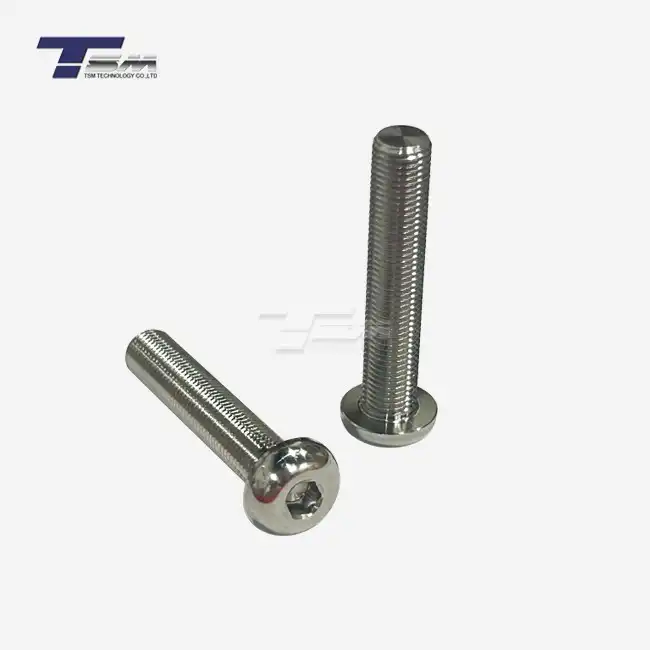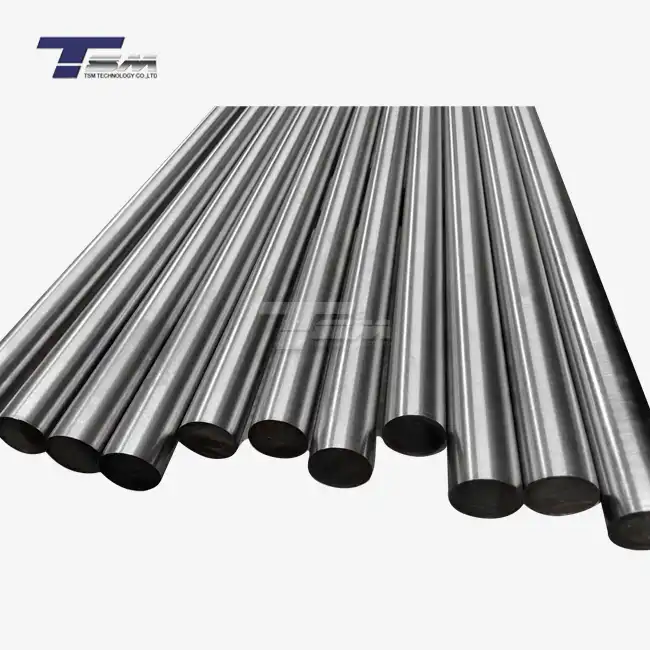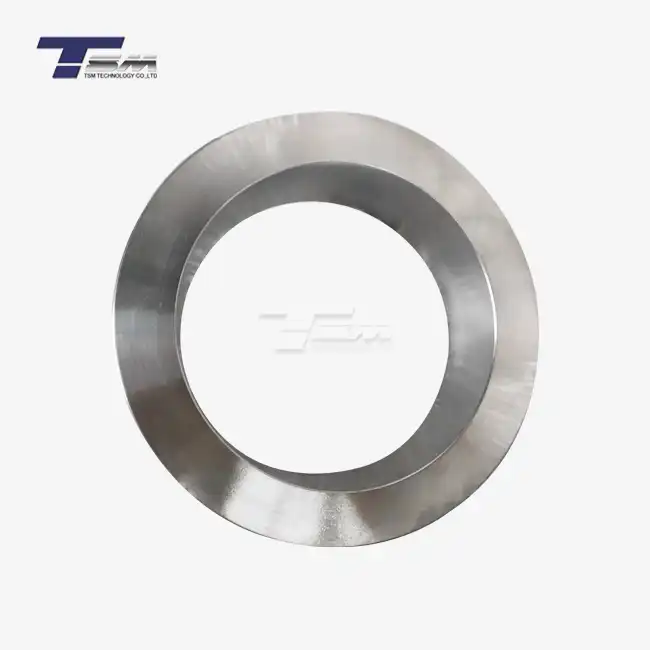Essential Preparation Steps for Fabricating Hastelloy C276 Round Bar
Surface Preparation and Cleaning Techniques
Proper surface preparation is paramount when working with Hastelloy round bar. Begin by removing any dirt, oil, or grease using a solvent cleaner specifically designed for high-performance alloys. For stubborn contaminants, consider using a vapor degreasing process. After cleaning, inspect the surface meticulously for any remaining impurities. It's crucial to achieve a pristine surface to ensure optimal fabrication results and prevent potential defects in the final product.

Cutting and Shaping Methods for Hastelloy C276
When it comes to cutting Hastelloy C276 rod, selecting the right tools and techniques is essential. Carbide-tipped tools are recommended due to their hardness and heat resistance. For precision cutting, consider using water jet or laser cutting methods, which minimize heat-affected zones and maintain the material's integrity. When machining, use slow to moderate cutting speeds with ample coolant to prevent work hardening and extend tool life. Remember that Hastelloy C276's work-hardening tendency requires careful approach to avoid excessive tool wear.
Heat Treatment Considerations for Hastelloy C276
Heat treatment plays a vital role in optimizing the properties of Hastelloy C276 round bar. Solution annealing can be performed at temperatures between 1120°C to 1180°C (2050°F to 2160°F), followed by rapid cooling. This process helps homogenize the microstructure and restore the alloy's corrosion resistance. However, it's crucial to control the cooling rate to prevent carbide precipitation, which could compromise the material's performance. Always consult the manufacturer's specifications for precise heat treatment parameters tailored to your specific application.
Advanced Welding Techniques for Hastelloy C276 Round Bar
Gas Tungsten Arc Welding (GTAW) Procedure
GTAW, also known as TIG welding, is a preferred method for welding Hastelloy C276 due to its precision and ability to produce high-quality welds. When performing GTAW on Hastelloy round bar, use direct current electrode negative (DCEN) polarity. Select a tungsten electrode containing 2% thorium or lanthanum for improved arc stability. Maintain a short arc length and use a shielding gas mixture of argon with 1-3% hydrogen to enhance weld penetration and surface finish. Control heat input carefully to prevent distortion and maintain the alloy's corrosion-resistant properties.
Shielded Metal Arc Welding (SMAW) Guidelines
For SMAW welding of Hastelloy C276 rod, choose electrodes matching the base metal composition, such as ENiCrMo-4. Preheat the material to 93°C-120°C (200°F-250°F) to reduce the risk of cracking. Maintain an interpass temperature below 150°C (300°F) to prevent hot cracking. Use a stringer bead technique with minimal weaving to ensure proper fusion and reduce the heat-affected zone. After welding, allow the material to cool slowly to room temperature to avoid thermal stresses.
Post-Weld Heat Treatment and Quality Control
Post-weld heat treatment (PWHT) may be necessary for Hastelloy C276 welds to relieve residual stresses and restore corrosion resistance. Typically, PWHT involves heating the welded component to 1080°C-1120°C (1975°F-2050°F) and holding for a specific time based on material thickness. Cooling should be done rapidly to prevent carbide precipitation. After PWHT, perform non-destructive testing such as radiography or ultrasonic inspection to ensure weld integrity. Additionally, conduct corrosion testing to verify that the welded area maintains the expected performance characteristics of Hastelloy C276.
Optimizing Fabrication Processes for Hastelloy C276 Round Bar
Tooling and Equipment Selection
Choosing the right tools and equipment is crucial for the efficient fabrication of Hastelloy C276 round bar. Invest in high-quality, carbide-tipped cutting tools designed for nickel alloys. These tools offer better wear resistance and can maintain their edge longer when working with tough materials like Hastelloy C276. For machining operations, consider using computer numerical control (CNC) equipment to ensure precision and repeatability. When selecting grinding wheels, opt for aluminum oxide or silicon carbide abrasives with a fine grit size to achieve smooth surface finishes on the Hastelloy rod.
Optimizing Machining Parameters
Fine-tuning machining parameters is essential for achieving optimal results with Hastelloy round bar. Use lower cutting speeds compared to those used for steel, typically in the range of 10-30 m/min (33-98 ft/min). Maintain a positive rake angle on cutting tools to reduce cutting forces and improve chip evacuation. Employ rigid setups and minimize overhang to reduce vibration and chatter. When drilling, use peck drilling techniques to prevent work hardening and ensure proper chip removal. Regular tool inspection and replacement are crucial to maintain consistent quality throughout the fabrication process.
Quality Assurance and Testing Protocols
Implementing robust quality assurance measures is vital when working with high-performance alloys like Hastelloy C276. Develop a comprehensive inspection plan that includes dimensional checks, surface finish measurements, and material composition verification. Utilize non-destructive testing methods such as dye penetrant inspection or magnetic particle testing to detect surface defects. For critical applications, consider performing mechanical testing, including tensile strength and hardness tests, to ensure the fabricated Hastelloy C276 components meet specified requirements. Maintain detailed documentation of all fabrication processes and test results for traceability and continuous improvement purposes.
Conclusion
Fabricating and welding Hastelloy C276 round bar demands a combination of specialized knowledge, precise techniques, and careful attention to detail. By following the guidelines outlined in this article, manufacturers can optimize their processes to achieve high-quality results. From proper surface preparation and cutting methods to advanced welding techniques and post-weld treatments, each step plays a crucial role in maintaining the exceptional properties of Hastelloy C276. As the demand for corrosion-resistant materials continues to grow across various industries, mastering the fabrication of this versatile alloy becomes increasingly valuable. By implementing best practices and staying updated on the latest advancements, professionals can ensure the successful production of Hastelloy C276 components that meet the most stringent performance requirements.
Contact Us
For more information about Hastelloy C276 round bar and our range of superior nickel alloys, please don't hesitate to contact us at info@tsm-technology.com. Our team of experts is ready to assist you with your specific fabrication needs and provide tailored solutions for your projects.



_1739071581132.webp)